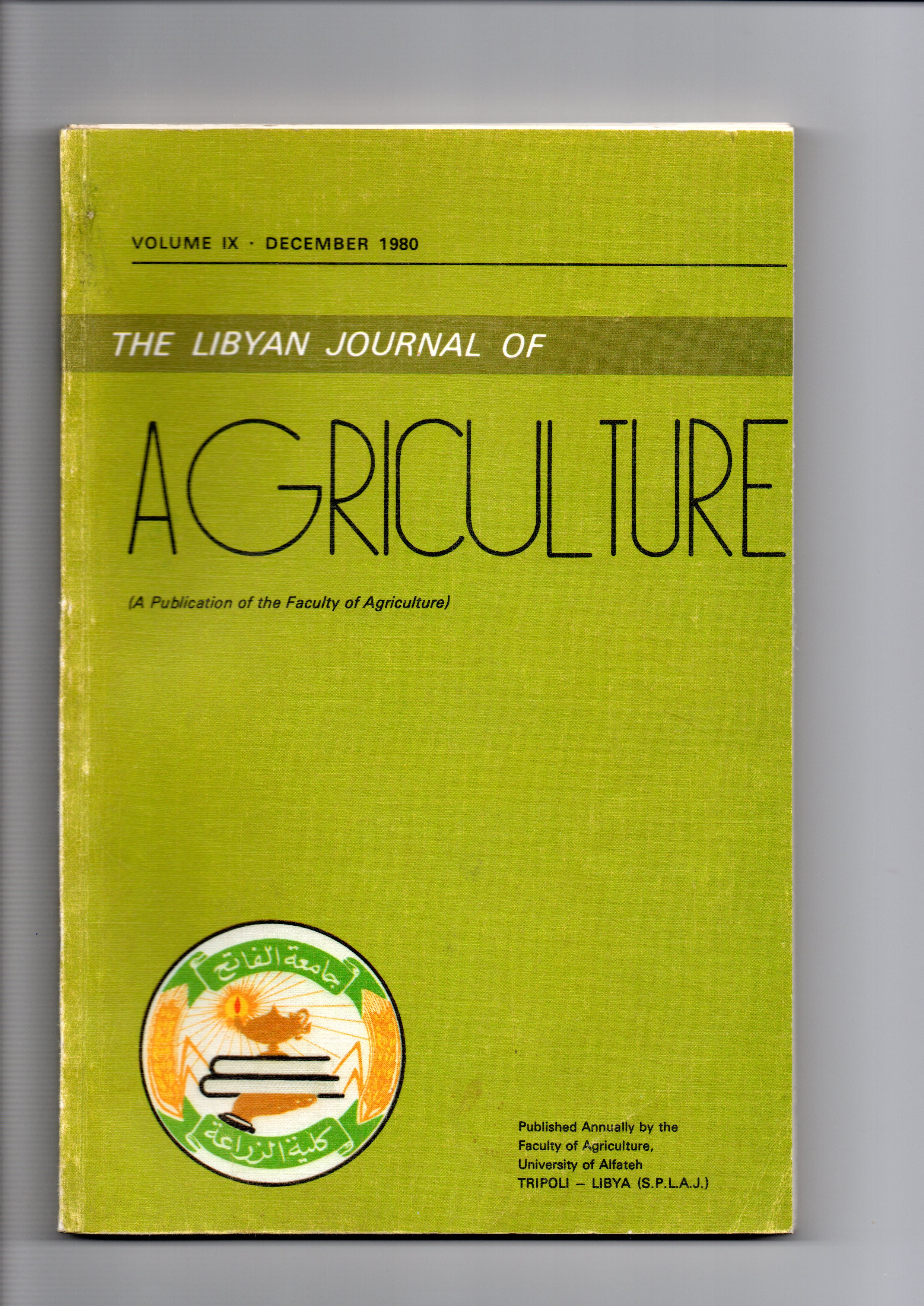Root-knot Disease of Cabbage and Lettuce from Tripoli Province— A New Record for Jamahiriya
Main Article Content
Abstract
Vegetables constitute one of the most suitable host crops for root-knot nematodes. Cruciferous vegetables, though not considered as good hosts as solanaceous, leguminous or malvaceous vegetable crops, are attacked by root-knot nematodes almost all over the world (2.4). The information available about the root-knot disease in Libyan Jamahiriya indicates that the disease is prevalent on a variety of crops (1.3). In 1968 many plants were enlisted as hosts of 4 major species viz. Meloidogyne javanica (Trueb) Chitwood: M. incognita (Kofoid and White) Chitwood; M. hapla Chitwood; M. arenaria (Neal) Chitwood, recognised to occur in the country (1).
No information is available regarding the root-knot disease of cruciferous vegetables in Jamahiriya. Although Pucci (5) casually enlisted and observed root-knot on cabbage and lettuce but he did not recognise the infecting species and did not describe the symptoms. There appears to be no established record of its occurrence in Tripoli Province.
During the winter of 1979-80. some field-plots of cabbage and lettuce plants in Ainzara were observed to have poor top growth. Examination of the roots of the plants revealed the presence of numerous galls on the roots.Roots of cabbage. Brassica oleracea var. capitata L. were heavily galled and showed
* stunted growth and bushy appearance (Fig. 1). Galls contained numerous mature females of M. javanica. The morphological features of the nematode especially the perineal pattern fully resembled those described for the species (6) (Fig. 3).In the same locality in a few' plots, some plants of lettuce. Lactuca saliva L. were observed to have galled roots. Galls were comparatively fewer than cabbage. Eggmasses were protruding at the root surface (Fig. 2). The morphological characteristics of the species infecting lettuce was identical to those of M. incognita as given by Williams (6) (Fig. 4).
This study established the first report on the presence, in the Jamahiriya, of .V/. javanica and M. incognita infecting cabbage and lettuce respectively.The extent of infestation is not known at this stage, but a preliminary survey by Khan and Dabaj (3) has revealed that, besides cabbage and lettuce, other cruciferous vegetables are also infected with root-knot nematode in Jamahiriya. In other parts of the world. M. incognita, M. javanica. M. arenaria. M. naasi, M. artiellia and M. thamesi are known to infect cabbage. AT arenaria, M. incognita and M. hapla are well known parasites of lettuce in different parts of the world. A thorough survey of these vegetables in different parts of the country may indicate the existence of other species of , Meloidogyne on these crops.

